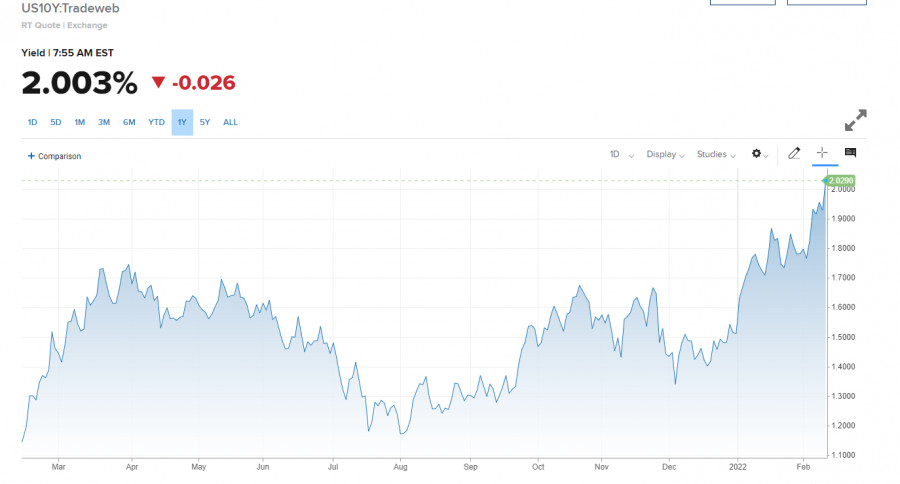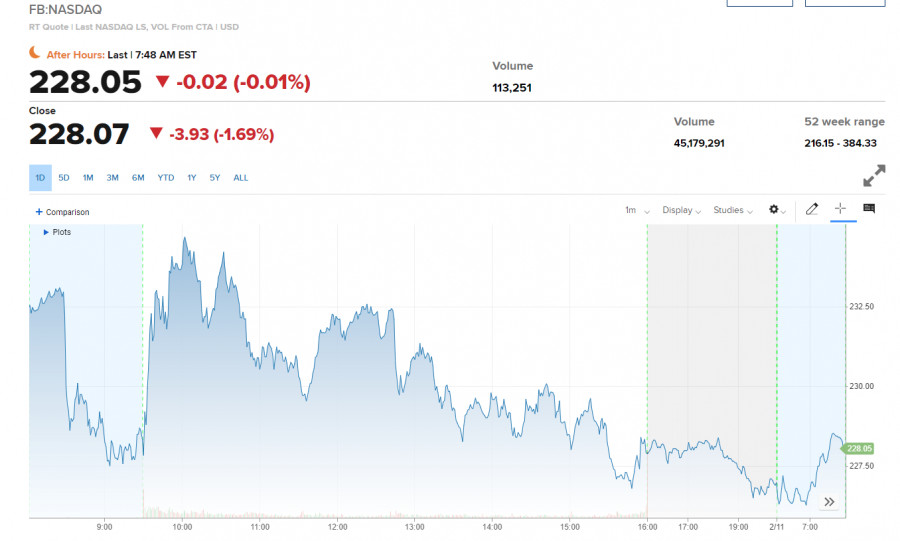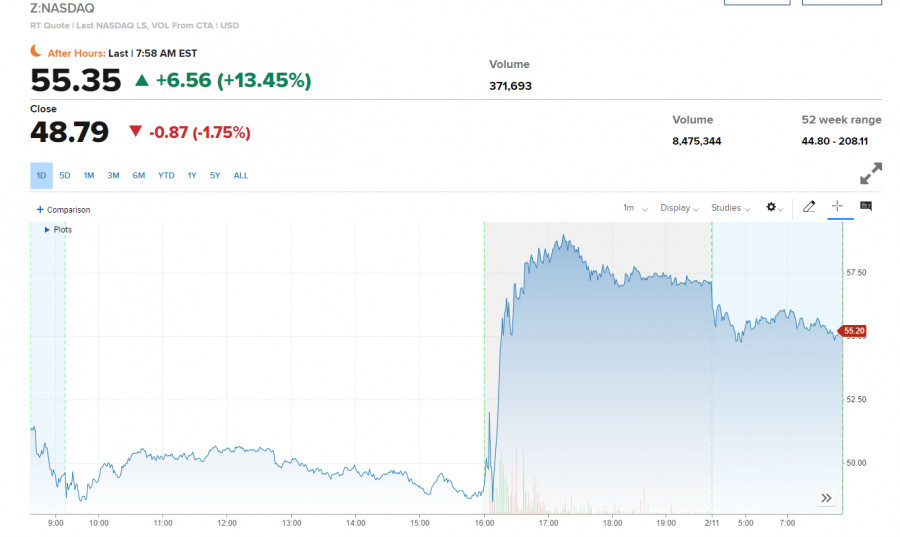
US stock index futures opened in the red on Friday, but then recovered and at the time of writing are showing slight gains. Yesterday, the market suffered a sharp sell-off after the highest inflation figures in four decades. The data exceeded expectations. Dow Jones Industrial Average futures jumped by 100 points or 0.3%. Futures on the S&P 500 are trading near zero with a slight gain of 0.1% and futures on the Nasdaq 100 are up by 0.7%.
The data released yesterday showed that the consumer price index rose by 7.5% from a year earlier after rising to 7% in December 2021. Inflation jumped just by 0.6% in January monthly, reflecting large increases in food, energy, and housing prices. As for the core index - which excludes energy and food prices as well as alcohol and tobacco - prices rose by 6% from a year earlier, also the highest level since 1982. Compared to December, the core index jumped by 0.6%.

Thursday's drop in risky assets also came amid a sharp rise in Treasury bond yields, which came in response to inflation data. The 10-year Treasury yield rose above 2% for the first time since 2019. The more interest-rate-sensitive 2-year yield rose by more than 26 basis points, the biggest intraday gain since 2009. Yields have now declined slightly, although the 10-year bond is still hovering around 2%.
Statements by Federal Reserve officials were also driving a major drop in the stock market. St. Louis Fed President James Bullard called for an acceleration of rate hikes by a full percentage point by early July. Expectations now are that the Fed could raise interest rates by 0.5% as soon as the March meeting.
The futures market also overestimated the chances of a rate hike. CME data indicates an 89% chance of a 50 basis point hike at the March meeting. Meanwhile, the market predicts a more hawkish schedule involving seven hikes.
Goldman Sachs has changed its expectations for Fed policy this year, calling for seven rate hikes in an attempt to cool down the economy, which has led to much steadier inflation than policymakers had expected. "Inflation should moderate this year as pandemic supply-demand imbalances fade and goods prices normalize, but the timing of that is uncertain, and the recent inflation trend is very firm," Goldman economist David Mericle said.
Despite all of the above, the high rate of inflation is mainly due to the effects of the pandemic. The US economy demonstrates excellent fundamental data, so the return of prices to an acceptable range is a matter of time. Many economists expect inflation to peak in January 2022. Inflation is projected to fall to 4.8% by the end of the year, and then fall to 2.4% by the end of 2023.
The University of Michigan will report today and they will release consumer sentiment data for February, which could help the market recover.

Premarket
Zillow shares rose strongly, jumping by 14%. This came right after the real estate operator reported a profit of $1.07 against an expected loss of $0.42 per share.

Tesla is showing no momentum in the premarket after dropping by almost 3.0% yesterday.
Meta is also not trying to recover from this week's collapse and is trading at yesterday's closing level, having lost 1.69% during Thursday's session. Apple dropped by 0.15% in the premarket after falling by 2.36% yesterday.
As for the technical picture of the S&P500
Once breaking through $4,536, bulls are likely to reach support at $4,449. If there are no active buyers there as well, it may lead to an increase of pressure on the index and a return bear market with the prospect of a renewal of the lows at $4 378 and $4 312. Bulls will probably try to make up for yesterday's losses today, but reaching above $4,536 will not be an easy task. If this happens, buying to the area of $4,598 is not ruled out, which will keep the bull market and bring the index into a new broad channel at $4,589 - $4,665 - $4,722.